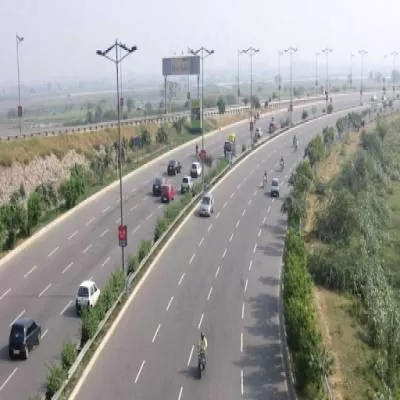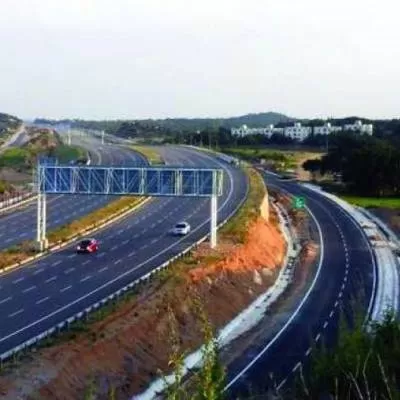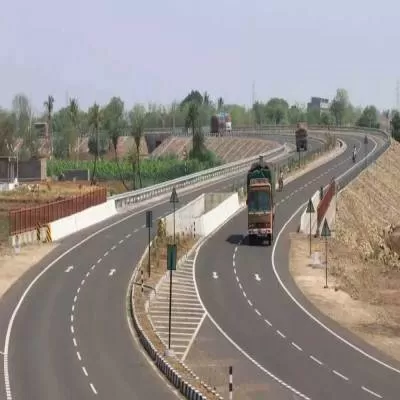- Home
- Infrastructure Transport
- ROADS & HIGHWAYS
- Conquering challenges in the construction of Medigadda Barrage of KLIS
Conquering challenges in the construction of Medigadda Barrage of KLIS
-
MV Ramakrishna Raju, Project Director, L&T, shares the major challenges involved in constructing this barrage and measures taken to overcome them:
- 18.5 lakh cu m concreting in a stringent timeline of 18 months: This project required 1,850,000 cum of concrete in just 18 months, translating into an asking rate of 5,000 cum per day during peak months. Eight batching plants and 100+transit mixers making approximately 1,000 trips a day fed13 boom placers in different locations spread across 3 sq km to build 13-15 different structures across the site.
- Meeting a massive requirement of aggregates, 20 lakh mt in 18 months: With an average daily requirement of 5,500 mt of aggregates, of different sizes varying from 10mm to 40mm according to the pour plan and grade of concrete, procurement, transportation and just-in-time delivery were critical considerations to meet targets. To meet the threat of rising water levels of the Godavari during the monsoons: Coffer dams, specially designed by experts, were constructed, reinforced with sheet piles to withstand a staggering discharge of 9 lakh cu m per second.
- Mobilising a huge workforce: The manpower requirement of 5,500 was across various categories like fitters, carpenters, welders, gas-cutters, drivers, plumbers, operators, fabricators, supervisors, foremen, etc. Mobilising and retaining such large numbers of skilled workmen, required a high level of functionality and strong administration. They were provided excellent accommodation, canteen and drinking water facilities with RO plant, refreshed with chilled buttermilk and oral dehydration salts during the summer when temperatures reached 45*C. The waste management for the entire workforce was routed through waste treatment plants of various capacities.
Consider this: This landmark project achieved 13.9 million safe man-hours. Another reason to label this endeavour a true marvel!
The Kaleshwaram Lift Irrigation Scheme (KLIS), one of the world’s largest irrigation projects, now operational, aims to irrigate 18.25 lakh acre in 13 districts and stabilise another 18.75 lakh acre in seven more districts of Telangana. In this article, we feature the challenges in constructing the Medigadda Barrage – the largest barrage of KLIS, constructed by Larsen & Toubro (L&T). MV Ramakrishna Raju, Project Director, L&T, shares the major challenges involved in constructing this barrage and measures taken to overcome them: 18.5 lakh cu m concreting in a stringent timeline of 18 months: This project required 1,850,000 cum of concrete in just 18 months, translating into an asking rate of 5,000 cum per day during peak months. Eight batching plants and 100+transit mixers making approximately 1,000 trips a day fed13 boom placers in different locations spread across 3 sq km to build 13-15 different structures across the site. Meeting a massive requirement of aggregates, 20 lakh mt in 18 months: With an average daily requirement of 5,500 mt of aggregates, of different sizes varying from 10mm to 40mm according to the pour plan and grade of concrete, procurement, transportation and just-in-time delivery were critical considerations to meet targets. To meet the threat of rising water levels of the Godavari during the monsoons: Coffer dams, specially designed by experts, were constructed, reinforced with sheet piles to withstand a staggering discharge of 9 lakh cu m per second. Mobilising a huge workforce: The manpower requirement of 5,500 was across various categories like fitters, carpenters, welders, gas-cutters, drivers, plumbers, operators, fabricators, supervisors, foremen, etc. Mobilising and retaining such large numbers of skilled workmen, required a high level of functionality and strong administration. They were provided excellent accommodation, canteen and drinking water facilities with RO plant, refreshed with chilled buttermilk and oral dehydration salts during the summer when temperatures reached 45*C. The waste management for the entire workforce was routed through waste treatment plants of various capacities. Consider this: This landmark project achieved 13.9 million safe man-hours. Another reason to label this endeavour a true marvel!




















